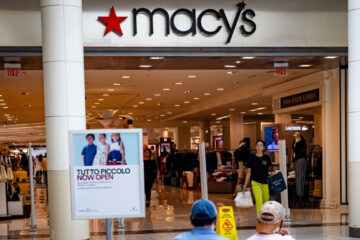Inflation may be forcing consumers to cut back on beef spending, but that doesn’t mean the stocks should be avoided, according to Real Money Columnist Kevin Curran.
As more consumers grow anxious about food prices, the high cost of beef is not only making Main Street consumers pass on the steak and burger aisle – it’s making investors think twice, too.
That’s a mistake traders can’t afford to make, argues Real Money Columnist Kevin Curran.
“Inflation, rising fuel costs, a Russia-Ukraine conflict, and persistent supply chain problems are all causing Americans to assess how they might tighten their belts,” Curran wrote recently. “And many appear to be cutting down on grocery bills by dropping certain food staples like meat.”
Beef is at the top of that “to avoid” list.
That scenario might cause investors to pull beef off their portfolio menu, too. However, the data shows that strategy to be undercooked, Curran noted.
“Actual results from major meat and poultry producers like Brazil’s JBS SA (JBSAY) , Tyson Foods (TSN) – Get Tyson Foods, Inc. Class A Report, Pilgrim’s Pride (PPC) – Get Pilgrim’s Pride Corporation Report, and Sanderson Farms (SAFM) – Get Sanderson Farms, Inc. Report are bucking these headwinds,” he said. “In fact, global meat and poultry producers are proving to be incredibly resilient.”
The resilience of these producers was brought to the forefront in JBS SA’s recent earnings release. The world’s largest meat processing company reported record net revenue in the past year, marking a year-over-year increase of nearly 30%.
More importantly, the company recorded strong growth in margins across its business, while forecasting the room for continued strength into the year.
“The strong demand for pork boosted the prices and was important to sustain margin growth in the quarterly comparison and to keep margin stables in the annual comparison even in the face of a much more challenging cost scenario, especially labor costs, packaging, and transport,” JBS CFO Guilherme Perboyre Cavalcanti told analysts on a call.
Vegetarian Risk
Even so, there’s a lingering concern about the consumer trends that show more Americans are moving toward vegetarianism and cost-cutting around meat-centered meal planning. How sustainable will demand prove?
“The issue is that these consumer trends are largely confined to the U.S. and Europe, while other parts of the globe pick up the slack,” Curran said. “According to the OECD Agricultural Outlook, meat consumption is projected to grow by 30% in Africa, 18% in Asia, and 1% in Latin America by 2030.”
Given insufficient production, which has been hampered even further by disease outbreaks among livestock and Covid lockdowns, international meat producers like JBS, Pilgrim’s Pride, Tyson, and more will likely need to fill the void.
“Indeed, China recently ascended to become the third most popular destination for U.S. beef exports and is likely to only ascend further,” Curran said.
While geopolitical wrangling and trade Issues could most definitely harm this growth trajectory in Asia, the trends outside of the climate-focused continents of the U.S. and Europe appear encouraging.
“As such, investors seeking to mitigate inflationary pressures in purchasing groceries might consider adding some meat producers and packagers to their shopping list,” Curran added.


